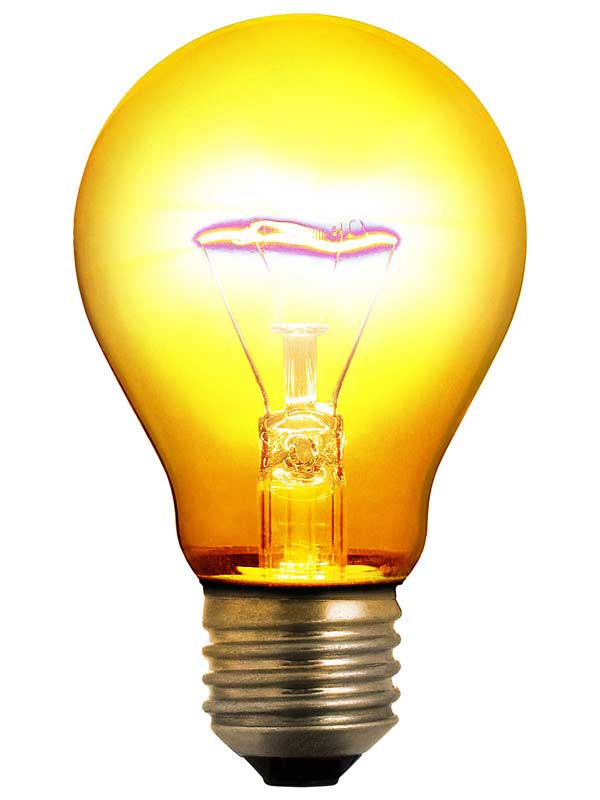How Crazy Ideas Could Power the Future

Editor's Note: Each Wednesday LiveScience examines the viability of emerging energy technologies — the power of the future.
A lucrative contest is on to find the next crazy green idea that may revolutionize the way we consume energy. Meanwhile, lots of not-so-crazy green ideas are just waiting to be implemented.
First off, the video contest called "What’s Your Crazy Green Idea?" is looking for a theme for the next X Prize in energy and the environment.
"We recognized that we don’t have all of the answers, and wanted to reach out to the people that a prize in energy and the environment would affect and find out their ideas for what we should be focusing on," said Sarah Evans, vice president of communications for the X Prize Foundation.
Contestants submitted their two-minute videos on YouTube. The winner will get $25,000, and their idea will be developed into a million-dollar competition to spur green innovation.
But why focus on "crazy" solutions?
"The day before something is a breakthrough, it's a crazy idea," Evans said. "We haven't yet had a major breakthrough in green technology yet, so all of the ideas challenge the current conceptions of energy production."
Sign up for the Live Science daily newsletter now
Get the world’s most fascinating discoveries delivered straight to your inbox.
However, some would say that major breakthroughs are not entirely necessary. Wind turbines and hybrids and energy conservation are already here.
A contest within a contest
The video submissions to "What’s Your Crazy Green Idea?" ranged from creating microalgae farms to harnessing the power of time travel.
"We were inspired by the sheer number of ideas and inquiries from the YouTube community," said Peter Diamandis, chairman and CEO of the X Prize Foundation, in a press release.
Of 133 videos, three were selected on the bases of creativity, viability, revolutionary impact, innovation and inventiveness, Evans said.
- "Energy X PRIZE: Reduce Home Energy Usage," by Jonathan Dreher of Cambridge, Mass. A prize to reduce the home energy consumption of American communities.
- "The Energy Independence X PRIZE," by Alan Silva of Roy, Utah. A prize to develop energy-independent homes that exist completely off the grid.
- "The Capacitor Challenge," by Kyle Good of Irvine, Calif. A prize to develop a new storage medium, an "ultra-capacitor."
The public was given the chance to vote on these three finalists, and more than 4,000 votes were cast. The winner will be announced in January, and an X Prize will be set up around the chosen theme.
"If something can be done easily, it isn't right for an X Prize, or if it's too hard, people won't want to compete, or the public will lose interest," Evans said. "We try to design prizes that can be won in between 3 and 8 years."
Stabilization wedges
Some have argued that a focus on future technology puts off solving environmental problems now.
In 2004, Princeton scientists Stephen Pacala and Robert Socolow published a paper in the journal Science, claiming that a number of existing strategies, what they called "stabilization wedges," could bring greenhouse gas emissions under control.
"Humanity already possesses the fundamental scientific, technical, and industrial know-how to solve the carbon and climate problem for the next half-century," wrote the authors. "It is important not to become beguiled by the possibility of revolutionary technology."
Pacala and Socolow were responding to statements by the U.S. government that the climate problem requires entirely new technology.
"We, of course, can benefit from fundamental research and must never inhibit blue-sky thinking," Socolow told LiveScience.
He thinks radical solutions and aggressive deployment of available technology can enhance each other.
Revolution through competition
Radical solutions are what the X Prize Foundation hopes to get with its competitions.
"X Prizes function to stimulate breakthroughs," Evans said.
Previous contests have focused on commercial space travel, lunar landers and green cars. Even if existing green technologies can stabilize CO2 emissions, ideas are still needed on how best to utilize them.
"The reason we were looking for 'Crazy Green Ideas' is because we did not simply want the standard 'use more solar power' answer," Evans said. "X Prizes exist at the intersection of audacity and achievability, so the ideas need to be just outside of the bounds of what is currently possible."
- Quiz: Great Inventions
- Innovation: The Ideas of the Future
- Top 10 Mad Scientists










